22 decluttering trends to try
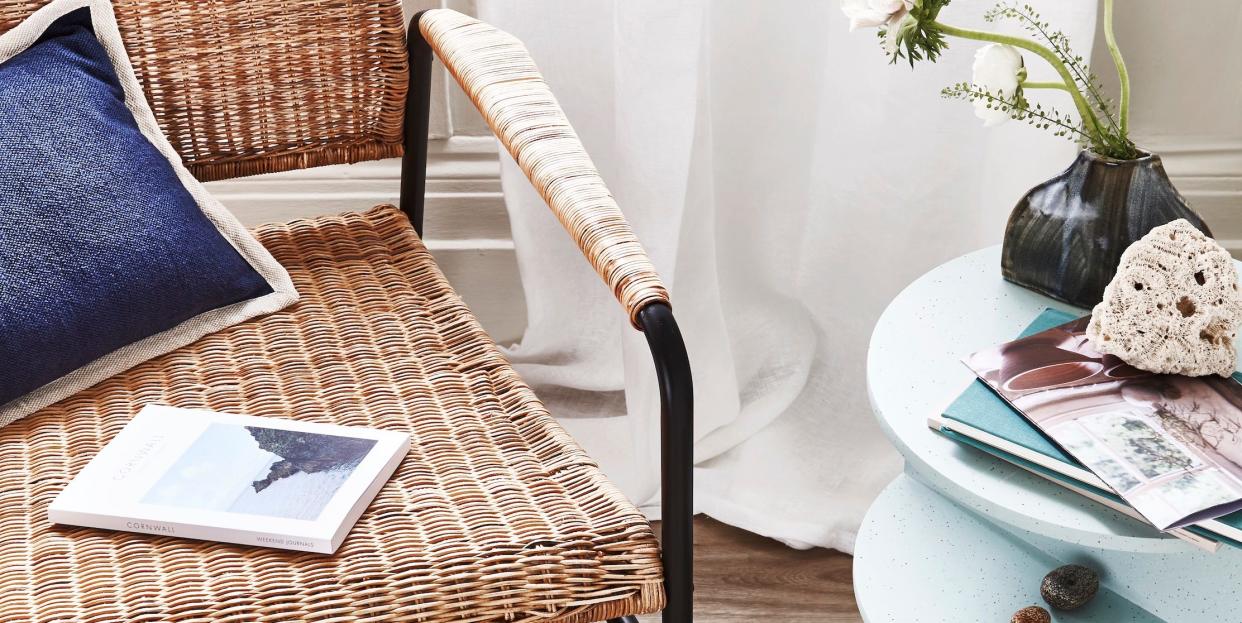
From trusted techniques by professional declutterers to enthusiasts sharing home organising tutorials armed with nothing more than bin bags and boxes, there's a plethora of decluttering methods at one's fingertips, but what's worth trying?
'The sheer amount of different ways, tips and tricks to decluttering now confirms it’s not a one-size-fits-all approach – nor should it be,' Siân Pelleschi, president of APDO (Association of Professional Declutterers and Organisers) and founder of decluttering and organising service, Sorted, tells House Beautiful.
Small spaces, inefficient storage and mindful living have all contributed to the tidying boom. On TikTok, #cleantok has amassed 110 billion views, and you'll find more than 80,000 posts dedicated to #decluttering wisdom, all of which has 'transformed decluttering from a daunting task into an engaging and achievable goal,' says Lois Baker, social media content creator at Vintage Cash Cow, an online platform for selling unwanted antiques.

There's truth to the saying 'tidy house, tidy mind', and some of this year's biggest decluttering trends – from Swedish Death Cleaning to The Minimalists' 90/90 Rule and the One Hour method to the Core 4 technique – has been proof of this.
'Thankfully, the keenness to declutter and get organised and be able to talk about it has helped reduce the stigma and embarrassment of having to ask for help when it comes to our homes and spaces,' says Siân. 'Some could say that perhaps we’re going a bit overboard when it comes to the different trends people have been coming up with. But I think that’s testament to the benefits decluttering can have not only on our physical health but our mental one too.'
How to choose the right decluttering trend
When it comes to picking which 'trend' to choose, Siân says you should ask yourself the following questions:
Do you like short, sharp bursts or longer sessions?
Do you get easily distracted or do you hyperfocus?
Do you find it easier to work with someone next to you or on your own?
Are you looking for a quick fix for now, knowing that there is an impending change, such as house renovation on the horizon? Or are you looking to make changes that will last?
'Once you have ascertained the way your brain works and your goals, you can then start to look at the different ways that might work for you. Ideally, the aim is to find a solution that has longevity and can be transferred should you move or have major changes in life,' advises Siân. 'You will most likely automatically be drawn to one or two methods and it’s always good to start with one and give it time to see how you get on before moving onto another to test.'
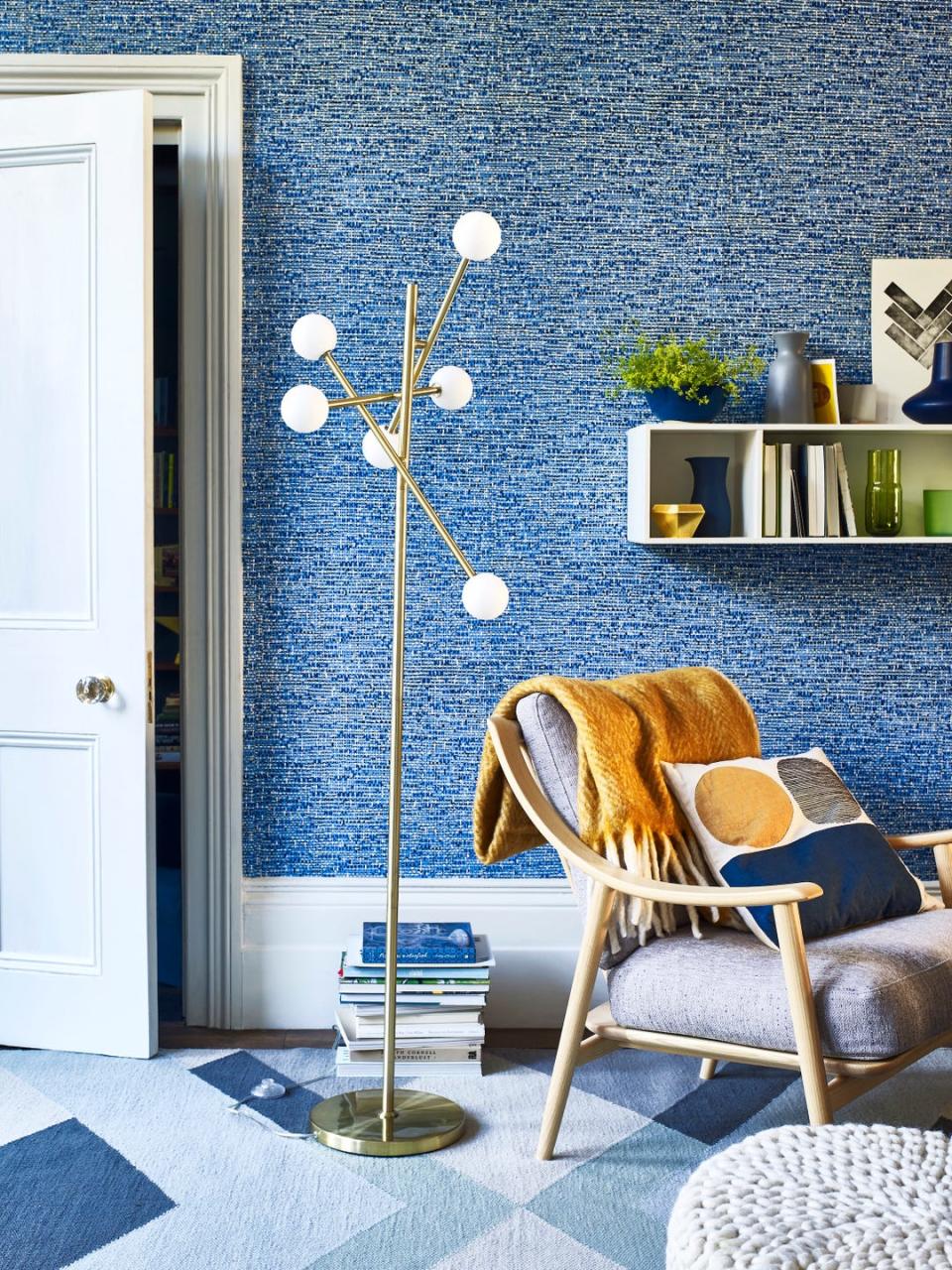
On that note, here are some of the biggest decluttering trends to try.
1. KonMari Method
Published in 2010, Marie Kondo's book, The Life-Changing Magic of Tidying Up, is more a cultural phenomenon than a list of hints and tips for keeping a tidy house. The Konmari Method rests on six rules:
Rule 1: Commit Yourself to Tidying Up. Marie says her method is not a quick fix for a messy room or a once-in-a-while approach to tidying.
Rule 2: Imagine Your Ideal Lifestyle. See the process of decluttering as a turning point from old life into new.
Rule 3: Finish Discarding First. Keep nothing that anchors you to the past in a negative way.
Rule 4: Tidy by Category, Not by Location. Keep like with like, in other words.
Rule 5: Follow the Right Order. Pick the easiest things to declutter first – typically clothes.
Rule 6: Ask Yourself If It Sparks Joy. Keep only things that make you happy.
Find out more here konmari.com.
2. One Hour Method
Designate one hour a day to declutter a particular spot in your home, say your living room bookshelves or bathroom cabinets, for example. Set a timer and do only what you can in that allotted time. This could be one concentrated task – such as cleaning, or a multitask of smaller jobs. The idea is to fit in as much as possible during those 60 minutes. Fans say it prevents you feeling overwhelmed by a daunting to-do list. Within a month, the plan is for your whole house to have become tidy and organised.
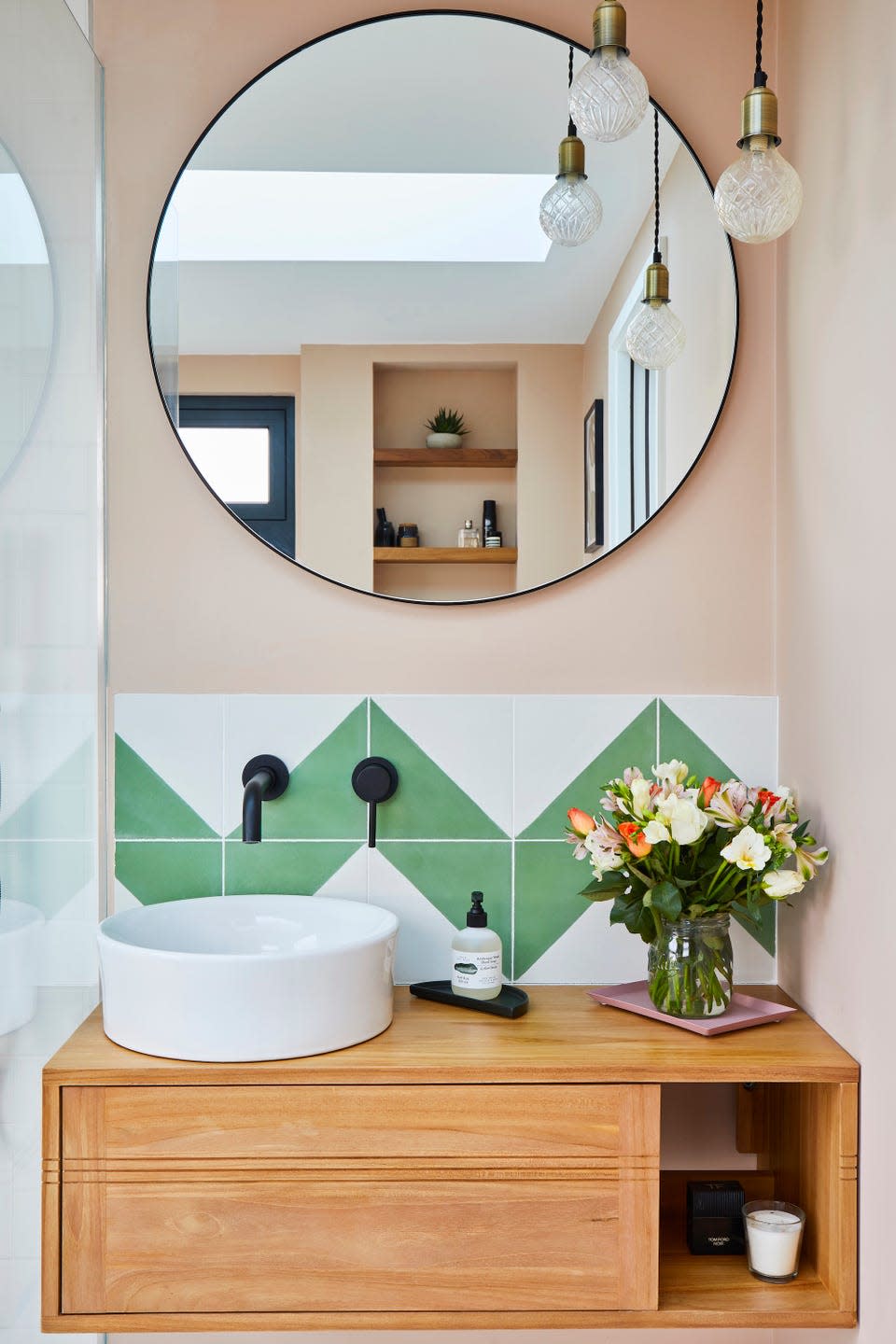
3. 30-Day Minimalism Challenge
Devised by podcasters and authors Joshua Fields Millburn and Ryan Nicodemus and their co-host T.K.Coleman, known as The Minimalists, this decluttering trend sets a month-long challenge. On day one, remove one item from your overcrowded home. On day two, remove two items, day three it’s three items and so on, until you reach the end of the month.
A good tip is to store everything you’ve taken away in a large box, before deciding whether to donate, sell or recycle. At the end of the exercise, examine the contents and congratulate yourself on how far you’ve come. But don’t waver and put anything back!
4. Core 4 Method
Devised by US professional organiser Kayleen Kelly to help us all think like professional declutterers, this trend breaks down the process into four simple steps; clear out, categorise, cut out, and contain.
It involves taking everything out of a specific area – a home office, for instance – piling it up, sorting it out into categories, deciding what you really need or should throw, and then finding ways to store the core items that remain.

5. The Four Box Method
This is a very simple decluttering approach based on getting four boxes together and then tackling a room, area or cupboard. Divide the boxes into four categories: keep, donate, trash, relocate. Then keep the items you want or need, donate things still in good condition but of no further use to you (to friends, family or charity), throw away broken bits, and then relocate anything that needs to live elsewhere in the home.
Bonus planet-saving point: Turn this into the ‘Five Box Method’ by adding a box for recycling, so take worn-out clothing to a textile bin, for example.
6. The ‘Move Out’ Method / Party Packing Trend
If you’re keen on visualisation techniques, you’ll like this. Imagine you’re moving out of your home – set a ‘moving date’, the day when you need to be sorted by. Don’t panic, you’re not about to empty every room, nook and cranny. You can focus on one drawer or do a whole room. Then remove everything from your designated space. Decide – as if you really were moving – just exactly what you would like to pack and take with you. Let go of the rest, donating, recycling, you know the drill. Then give the cleared area a quick clean, and ‘move back in’, just as if you really had moved house.
7. Minimalist Game (#MinsGame)
Another one from The Minimalists, this is basically the 30-Day Minimalism Challenge but with a competitive element thrown in. You’ll need to persuade at least one friend to play along. Follow the rules, get rid of one item on day one, two on day two, adding a number until the end of the month. Whoever keeps going the longest wins. If you both make it to the end of the month, share your prize – we recommend a nice treat. But no shopping!

8. Swedish Death Cleaning
Coined by Swedish author Margareta Magnusson when she wrote her 2017 book, The Gentle Art of Swedish Death Cleaning: How to Free Yourself and Your Family from a Lifetime of Clutter, this decluttering method is aimed at those who wish to get their homes in order so others don’t inherit the burden once they pass away. The bestselling book has even spurred on a TV series narrated by Amy Poehler, available to watch on UKTV. Swedish Death Cleaning sounds morbid but it's a 'permanent form of organisation that makes your everyday life run more smoothly'.
Immediate benefits include a calmer, less cluttered living space that’s safer to live in and easier to keep clean. The advice is to start with the big items, such as bulky furniture, and neglected areas such as lofts packed to the rafters with unknown items, with the aim of getting rid of all the stuff you’ve accumulated that you no longer need.
'Swedish Death Cleaning is not a quick-fix approach,' says Siân. 'It’s something that will take time to go through and understand, so may not be right if you’re working to a short deadline.'
9. One In, One Out Rule
This is a ridiculously simple decluttering strategy and if you follow it from now on, your home should never end up piled high with stuff again.
Whenever you buy or are given an item, get rid of another one. It could be something similar – like mugs, for example – but it doesn’t have to be. Just put the item to go near the front door and decide whether you’ll pass it on to a friend, donate to a charity shop or recycle it. Then you can enjoy your new item without guilt.
10. Project 333
Trademarked by author and anti-stress guru Courtney Carver, Project 333 is a minimalist fashion challenge that invites you to dress with 33 items or less for three months to simplify your wardrobe.
That’s everything including shoes, clothes, accessories and jewellery, but excluding underwear, sleeping/lounge/workout clothing and a wedding ring, if you have one. Courtney advises boxing everything else up and putting the box out of sight, and not touching it for three months. No rummaging allowed. And the end of the process you can reassess your wardrobe and declutter accordingly.

11. Five-Minute Tidying Session
Waiting for a cup of tea to brew? You could spend any idle five minutes turning your attention to a shelf, drawer, or that bowl that’s always full of bits and pieces, and give it a good sorting out. Small wins are the key to accepting ongoing decluttering as part of a happy, organised home that will reap rewards in terms of a calmer, more focused you.
12. The 80/20 Rule
This is an interesting one that will make you think. The 80/20 rule has its roots in economic theory; it’s the principle that 20 per cent of what we put into something is responsible for 80 per cent of the outcome.
When we translate this to decluttering, it means that on average, we use 20 per cent of what we own 80 per cent of the time. The rest is effectively useless. A bit harsh perhaps, but look around your home and consider whether those superfluous items are really earning their keep.
13. The 90/90 Rule
Here come The Minimalists again. So, there’s an object in your hand and you can’t decide whether to keep it or not. NB: This works really well when decluttering your wardrobe or a kitchen full of coffee-makers, fancy whisks and tools you’ve forgotten the purpose of.
Ask yourself, 'have I used this object in the last 90 days?' And if not, 'will I use this object in the 90 days ahead?' If the answer to both questions is 'no', it needs to move on.

14. The 20/20 Rule
Thanks to The Minimalists for this one too. Many of us keep things ‘just in case’. If you’re reluctant like this, it can be hard to get over your anxiety. So the theory goes that when it comes to ‘essential’ items, such as that huge wok you never use and takes up far too much space, don’t do it unless you can replace it for less than £20 (The Minimalists use dollars) in a less than 20-minute journey from your home.
They say that this theory likely works 99 per cent of the time for 99 per cent of all items and 99 per cent of all people.
15. Take the 12-12-12 challenge
Created by Joshua Becker at Becoming Minimalist, this is a pretty hardcore decluttering technique but it’s brilliant for messy family houses. Grab three bin bags and go around your rooms. The challenge is to locate 12 items to throw, 12 to donate, and 12 to be returned to their proper home. Add that up and it’s 36 items altogether that you will get rid of by the end.
Don’t be too hard on yourself, however. It’s the method that counts, not the number. If you can’t find 12 in each category, it’s fine.
16. Sunday Reset
This TikTok trend is all about using what’s still known in some cultures as ‘the day of rest’ to set a positive foundation for the week. Along with self-care, batch cooking and watering your houseplants, take time out on Sundays to declutter. A Sunday Reset doesn't have to include major jobs – sorting post, recycling newspapers and magazines, tidying toys into baskets can all be achieved as you potter around.
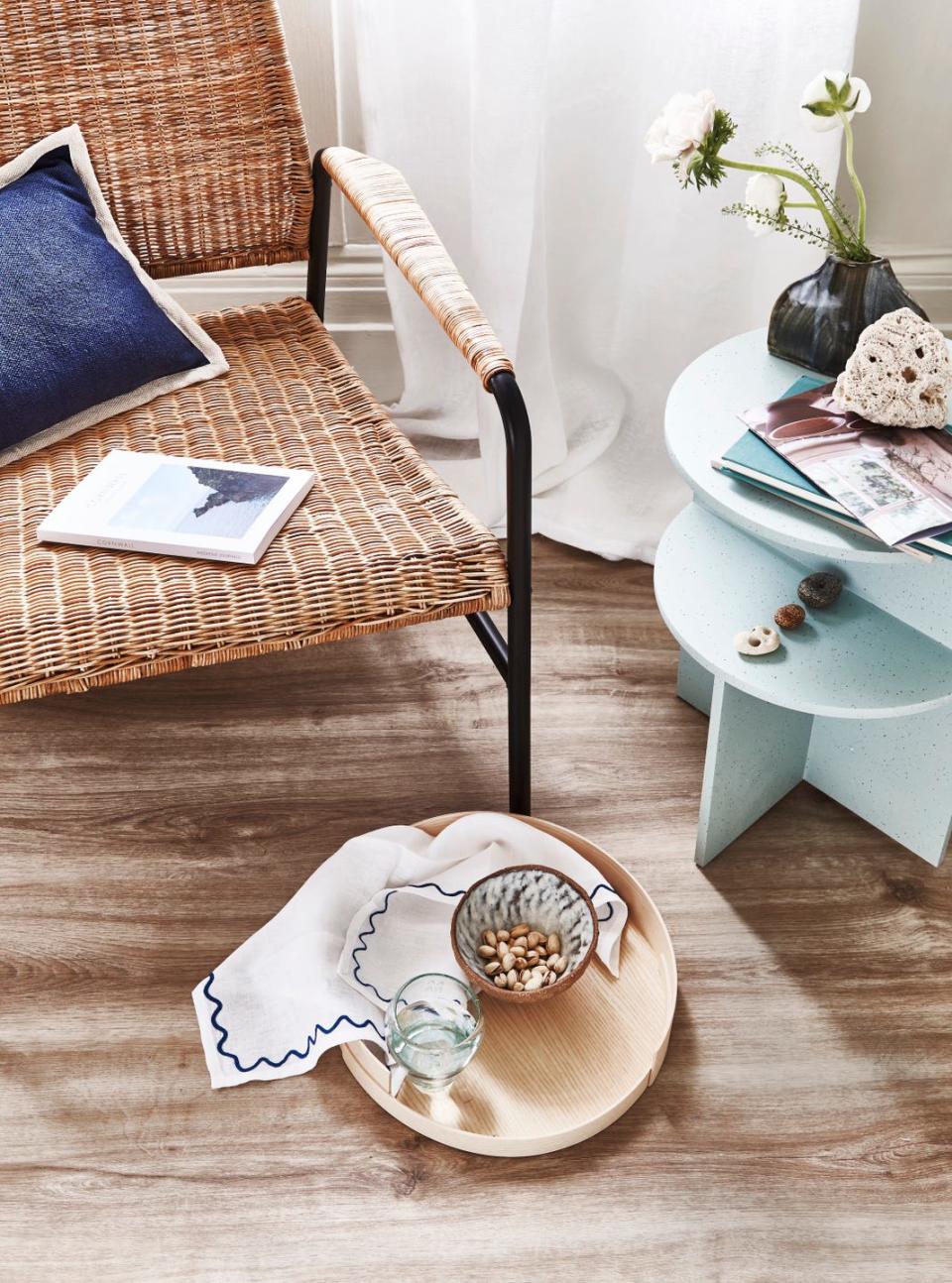
17. Go 'No Contact'
If you’re especially sentimental and find it hard to let go, but you’re drowning in a sea of clutter, go no contact. You need a large box (or boxes) and you'll need to mark a future date on the calendar (decluttering experts recommend six months later).
Then go through your stuff – this works particularly well with clothes, costume jewellery and ugly handed-down heirlooms – and box up the things you have no immediate need or use for. Put the box away and forget about it. Experience life without the clutter, embracing your new space. In six months, open the box – you’ll be surprised at what you really do still need.
18. The Pile
Perfect for tackling a messy bedroom, with this method you’ll need a container (try a laundry basket) or even a bedsheet or throw. Simply grab everything that’s in the room but shouldn’t be there and pile it all up. Carry the makeshift crate to the living room. Switch on your favourite TV show or music, and sit and sort everything into smaller piles, disposing of any rubbish. Then when you’re sorted, put it all away in the correct places.
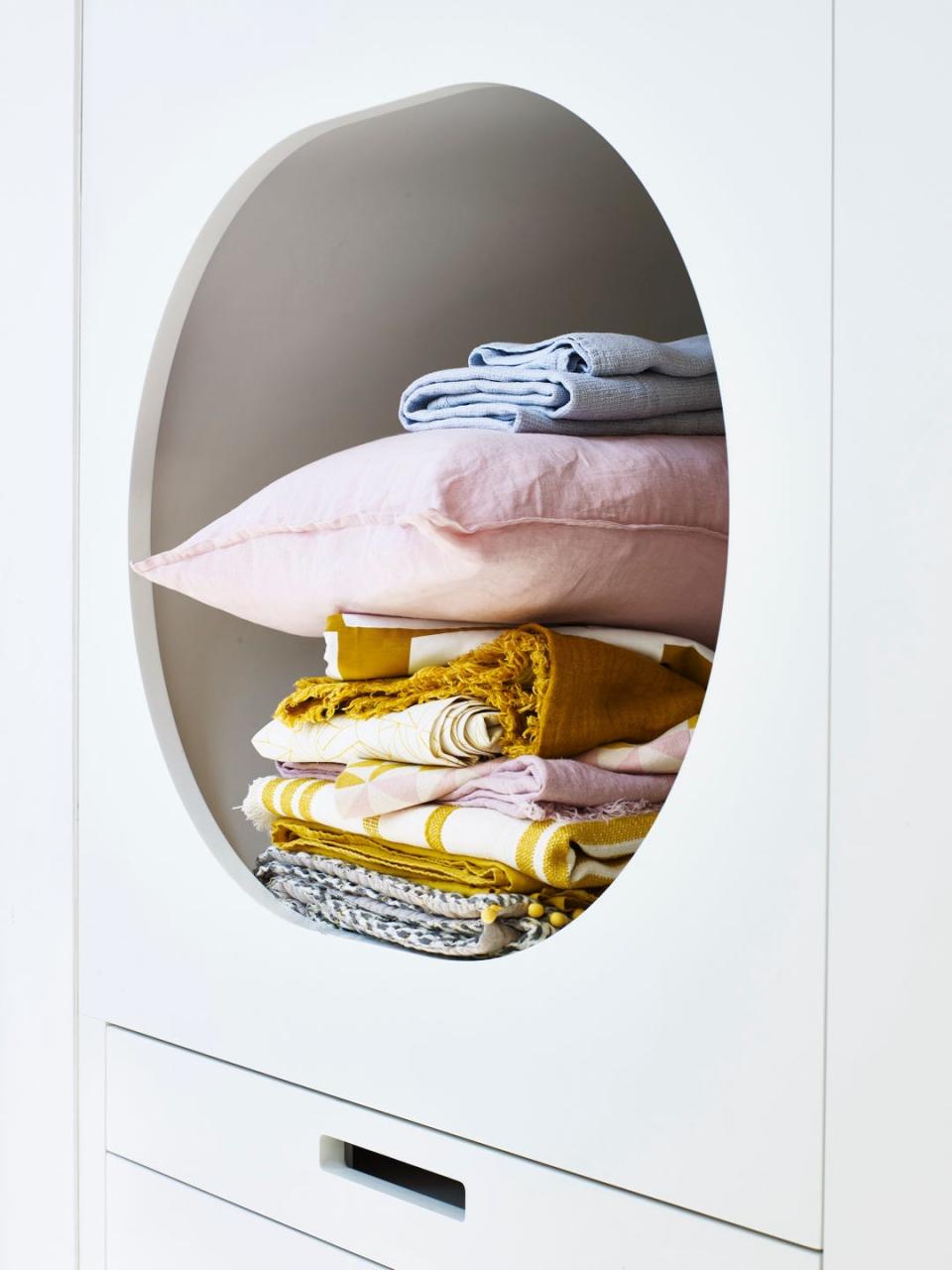
19. Reverse Hanger Trick
This is a neat one if you need to streamline your wardrobe. At the start of each season – spring, summer, autumn, winter – turn all of the coat-hangers in your wardrobe backwards. Every time you wear an item, turn the hanger forwards. At the end of the season, look at those rows of hangers – assess what you’ve worn and what you’ve left gathering dust. You know what to do next!
20. The 50-50 Rule
If you love your knick-knacks, artwork and ornaments, here’s a way to stop yourself from being swamped – and still show off your treasures. Pull together all – yes, all – of the decorative items you own. Put half on display and store the rest in a box, divided into rooms or colour themes. As the seasons and home decor trends change, go ‘shopping’ in your own store. You’ll find treasures you’d forgotten about just waiting for a new lease of life.
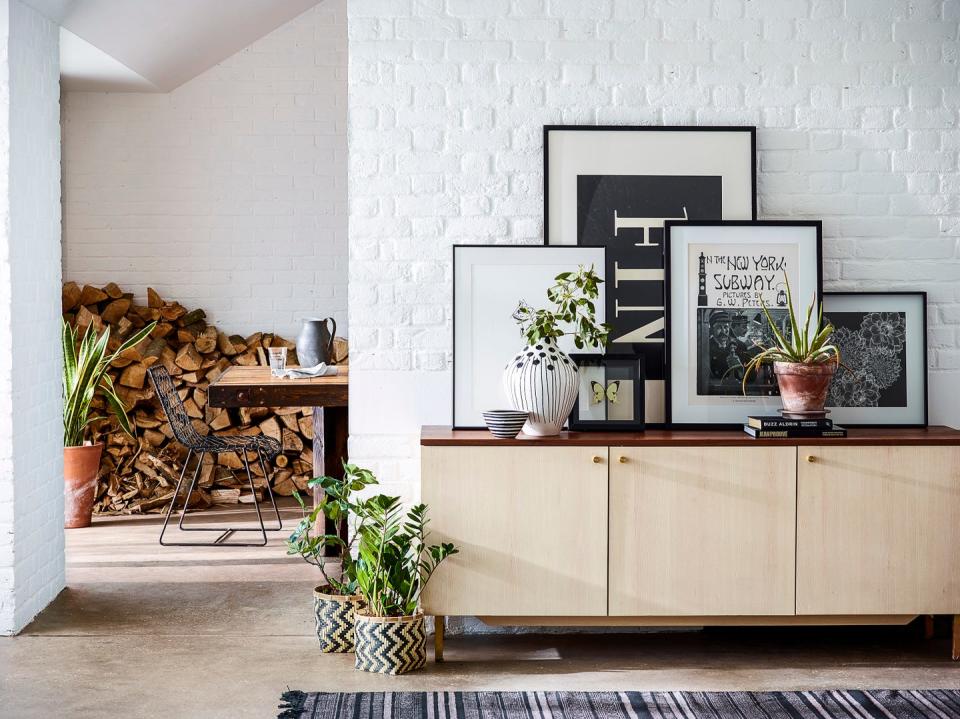
21. Roll the Dice
A popular way to get kids to clean their rooms, Roll the Dice involves compiling a numbered list of chores. Get rolling – you may need a 12 or 20-sided dice, or improvise and pull numbered squares out of a hat. Whatever number comes up, the chore must be completed. If you’re uncertain where to start decluttering, the dice game is a great way to galvanise yourself into action. Just make your list of smaller tasks (such as sorting out a sock drawer or herbs and spices collection) to keep it manageable.
22. The Boundary Method
To prevent essential but annoying items – paperclips, pens and hair elastics certainly fall into this category – being left all over the house, adopt The Boundary Method. Corral each category into its own place, so a dish in the home office for the paperclips, a holder for the pens in the hall and a pot for the hair elastics in the bathroom. Don’t forget to tell all other household members, so they don’t unintentionally sabotage your efforts.
Follow House Beautiful on TikTok and Instagram.
You Might Also Like



